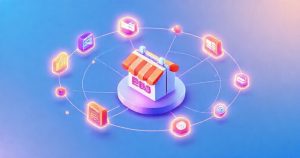In the dynamic world of online retail, managing an Etsy shop efficiently requires more than just creating unique products. Strategic implementation of Etsy integrations can profoundly transform daily operations, from inventory tracking to order fulfillment and customer engagement. These powerful tools are designed to automate repetitive tasks, reduce errors, and free up valuable time, allowing sellers to focus on creativity and business growth rather than administrative burdens. Understanding the diverse range of available integrations is crucial for any Etsy entrepreneur aiming for scalability and sustained success.
Understanding Etsy Integrations
Etsy integrations refer to third-party applications or software solutions that connect directly with an Etsy shop’s backend. This connectivity enables seamless data exchange, automating various business processes that would otherwise demand manual effort. From managing product listings across multiple platforms to streamlining shipping and accounting, these integrations serve as vital components for modernizing and professionalizing an online craft or vintage business. They are designed to enhance operational efficiency, providing a competitive edge in a crowded marketplace.
The core purpose of integrating Etsy with other tools is to centralize operations and synchronize data. When an order comes in, an integration can automatically update inventory levels, create a shipping label, and log the sale in an accounting system. This interconnected ecosystem minimizes the risk of overselling, ensures accurate financial records, and significantly speeds up the order fulfillment process. Ultimately, Etsy integrations are about building a more robust and responsive business infrastructure.
Core Integration Categories for Etsy Sellers
Inventory and Product Management
Effective inventory management is paramount for any Etsy seller, especially those with diverse product lines or selling across multiple channels. Etsy integrations in this category automatically synchronize stock levels, preventing overselling and ensuring accurate product availability. These tools can update quantities in real-time as sales occur on Etsy or other e-commerce platforms, providing a centralized view of all inventory. This automation saves considerable time and reduces potential customer service issues related to unavailable items.
Beyond simple stock tracking, advanced product management integrations can assist with bulk listing updates, variations, and even product bundling. They allow sellers to manage product descriptions, photos, and pricing from a single dashboard, then push these changes to their Etsy shop effortlessly. For businesses with extensive catalogs, these Etsy integrations are indispensable for maintaining consistency and efficiency in product data management, ensuring all listings are current and accurate.
Order Processing and Shipping Solutions
Streamlining the order fulfillment process is a critical area where Etsy integrations offer significant value. These solutions automatically import new orders from Etsy into a centralized system, where sellers can efficiently manage packing slips, shipping labels, and tracking information. Integrations often connect directly with major shipping carriers, allowing for real-time rate comparisons and label printing, which can lead to cost savings and faster dispatch times.
Shipping integrations can also automate customer notifications with tracking updates, enhancing the post-purchase experience. By reducing the manual effort involved in processing each order, sellers can handle a higher volume of sales without increasing their workload disproportionately. This level of automation is essential for scaling an Etsy business, freeing up time to focus on product creation and marketing efforts rather than repetitive shipping tasks.
Financial Tracking and Accounting Automation
Maintaining accurate financial records is fundamental for any successful business, and Etsy integrations for accounting simplify this complex task. These tools automatically pull sales data, fees, and expenses from Etsy, categorizing them for easy bookkeeping and tax preparation. They eliminate the need for manual data entry, significantly reducing the risk of errors and saving countless hours each month. Sellers can gain clear insights into their profitability and financial health.
Furthermore, many accounting integrations can connect with bank accounts and other payment processors, providing a holistic view of a business’s finances. This comprehensive data allows sellers to monitor cash flow, track specific product profitability, and identify areas for financial optimization. Utilizing these Etsy integrations ensures that tax season is less stressful and that business decisions are based on reliable and up-to-date financial information.
Multi-Channel E-commerce Platforms
Many Etsy sellers aspire to expand their reach beyond a single marketplace by establishing a presence on their own e-commerce websites. Integrations that connect Etsy with platforms like Shopify or WooCommerce enable seamless management of products, orders, and customer data across all sales channels. This multi-channel approach helps diversify revenue streams and reduces reliance on a single platform, offering greater business resilience.
These powerful Etsy integrations ensure that inventory levels are consistent across all storefronts, preventing potential oversells and customer dissatisfaction. They also centralize order management, allowing sellers to process orders from both Etsy and their independent website from a single dashboard. This synchronization is crucial for maintaining brand consistency and operational efficiency as a business expands its online footprint.
Print-on-Demand (POD) and Dropshipping
For sellers offering custom-designed products without holding physical inventory, print-on-demand (POD) and dropshipping integrations are transformative. These Etsy integrations automate the entire fulfillment process: when a customer places an order, the integration automatically sends the design to a POD partner, who then prints, packages, and ships the item directly to the customer. This model eliminates the need for inventory management and upfront production costs.
Dropshipping integrations operate similarly, connecting a seller’s Etsy shop to a supplier’s catalog. This allows sellers to offer a wide range of products without ever handling the physical goods. Both POD and dropshipping Etsy integrations enable entrepreneurs to focus on design and marketing, expanding their product offerings with minimal operational overhead and reducing the risks associated with carrying inventory.
Marketing and Customer Relationship Management (CRM)
Engaging with customers and promoting products are vital for growth, and marketing-focused Etsy integrations can significantly enhance these efforts. These tools often connect Etsy sales data with email marketing platforms, allowing sellers to build targeted subscriber lists and automate email campaigns. This enables personalized communication, such as thank-you notes, follow-up emails, or promotions for related products, fostering customer loyalty and repeat purchases.
CRM integrations help manage customer interactions, tracking purchase history, communication logs, and preferences. This detailed customer profile allows sellers to offer highly personalized experiences and resolve issues more efficiently. By leveraging these Etsy integrations, businesses can cultivate stronger customer relationships, leading to increased satisfaction and positive reviews, which are invaluable for long-term success on the platform.
Strategic Advantages of Employing Integrations
The strategic deployment of Etsy integrations offers numerous advantages that extend beyond mere automation. They provide a foundational framework for operational excellence, enabling businesses to scale without being constrained by manual processes. By minimizing the time spent on administrative tasks, sellers can reallocate their efforts towards product development, marketing campaigns, and customer service, which directly contribute to revenue growth and brand building.
Furthermore, integrations enhance data accuracy across all business functions, leading to better decision-making. With real-time inventory updates, precise financial reporting, and streamlined order fulfillment, sellers gain a clearer understanding of their business performance. This comprehensive view allows for proactive adjustments to strategies, optimizing for profitability and customer satisfaction, ultimately fostering a more resilient and competitive Etsy shop.
Selecting the Optimal Integration Tools
Choosing the right Etsy integrations requires careful consideration of current business needs, future growth aspirations, and budget constraints. Sellers should evaluate tools based on their specific features, ease of use, compatibility with existing systems, and customer support quality. It is beneficial to read reviews and explore free trials where available to ensure an integration aligns perfectly with the unique workflow of a particular Etsy shop.
Prioritizing integrations that address the most pressing pain points—whether it’s inventory management, shipping, or accounting—can yield the most immediate benefits. As the business evolves, additional Etsy integrations can be layered on to support new processes or expand capabilities. A thoughtful, phased approach to adoption ensures a smoother transition and maximizes the return on investment for each integration implemented.
Conclusion: Empowering Your Etsy Journey with Integrations
Embracing Etsy integrations is a strategic imperative for any seller seeking to optimize their operations, enhance efficiency, and foster sustainable growth. These powerful tools offer a pathway to automate tedious tasks, reduce errors, and provide valuable insights into business performance. By carefully selecting and implementing the right integrations for inventory, shipping, accounting, and marketing, Etsy entrepreneurs can transform their daily workflows, free up creative energy, and build a more robust and responsive business. The journey to a more streamlined and successful Etsy shop begins with intelligent integration choices.






